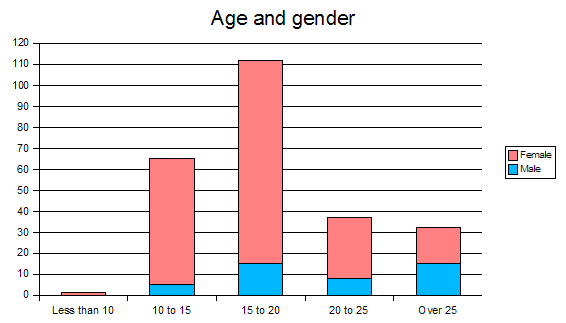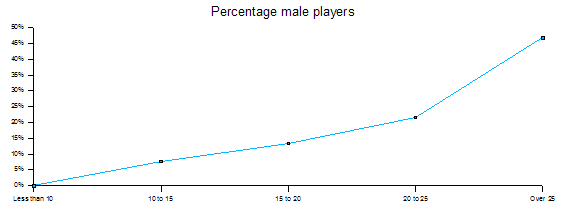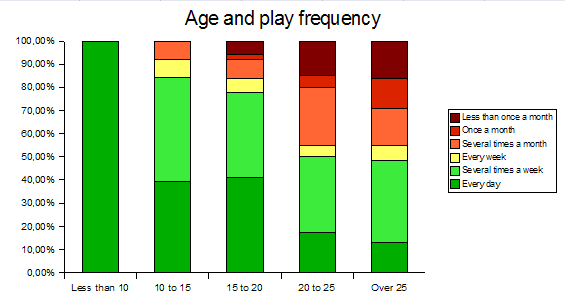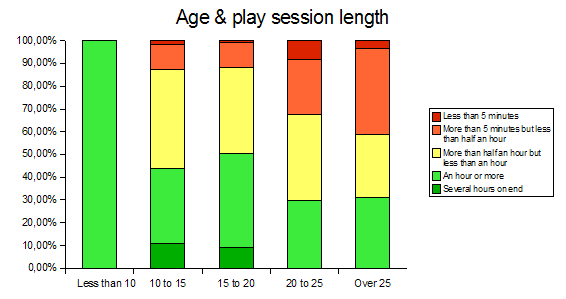Back in 2005 when we released the first phase of The Endless Forest, the idea of the fair sex playing videogames was strange and fascinating. So much so, that we made it a high priority at Tale of Tales to make games that would attract males and females in equal amounts. After running our little mmo for almost 3 years, we have done a survey that perhaps demonstrates that we may have exaggerated a little bit.
We have organized this survey together with PhD student Eva Kekou and we’re only expecting official results in the Fall. But we’d like to share some things that are abundantly clear without scientific investigation.
Of the over 30 thousand registered members, almost 250 have taken the survey. That’s less than 1 percent. So a grain of salt is in order. Also because some of the participants have expressed enjoying taking the survey. So perhaps the results only represent Endless Forest players who like filling in surveys.
We knew that a lot of women and girls are playing The Endless Forest but the bare figures did come as a bit of a shock to us: only 41 of the 247 participants who answered the gender question in the survey are male. That’s less than 1 in 5. I’m not sure if we should feel proud or embarrassed.
The following graph shows how the participants are divided per age group.

So the majority of players are teenagers. At least those who filled in the survey. Something interesting happens with the gender balance as players get older, though.

As players get older, the gender becomes more balanced. In the age group of over 25, there’s almost an equal amount of men and women.
We always thought that The Endless Forest was a casual experience, in the strict sense of the word. Something you do leisurely, just once in a while. But that was probably because we were only thinking of adult players. As the next graphs show, teenagers spend a lot more time in the Forest.

The one child of under 10 who particpated in the survey, apparently plays the game every day. The older the players get, the less frequently they play.

Something similar shows up in the data concerning the time of an average play session. Some teenagers play The Endless Forest for several hours on end. I find that quite astonishing, and slightly worrying. Most play around an hour. As players get older, the sessions get shorter.
We also asked whether participants played other games than The Endless Forest. Most of them do (almost 90%). The games that were mentioned most were games in which your avatar is also an animal: Okami and Wolf Quest. The Sims and Zelda games scored pretty well as well, followed by World of Warcraft, Zoo Tycoon, Pokemon, Final Fantasy and, believe or not, Halo (almost 5%).
Another thing that caught our eye was how many of the participants had first learned about The Endless Forest through fan art on Deviant Art: 1 in 5 players! Followed closely by word of mouth (friends and family: 16%). Google searches came up third (almost 10%), followed by the community around the Wolf Quest game.
With the relentless creativity displayed by the players on The Endless Forest community site, it should come as as no surprise that over 90% of the players considers themselves to be creative, an artist or designer (either professional or hobbyist). And many of them participate in other forms of culture (mostly music and books, but also comics and cinema, and fewer visit concerts or theater).
Overall, we’re very suspicious of surveys and statistics. So we’re not taking this too seriously. But it’s an interesting indicator. I wish we could interest more boys and men in our games. But I don’t think we’ll add any guns and sports for that purpose. Maybe we should just admit that we make games for girls. I don’t see other developers being embarassed about making games for boys. 😉










